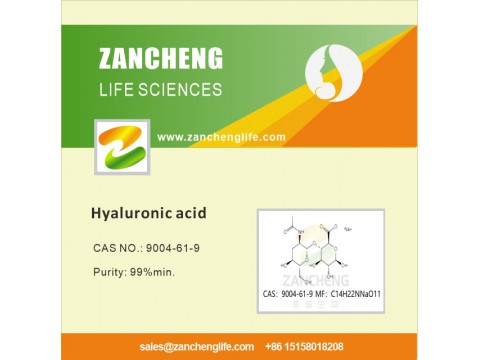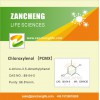Hyaluronic acid is an acidic mucopolysaccharide. With its unique molecular structure and physical and chemical properties, hyaluronic acid has shown a variety of important physiological functions in the body, such as lubricating joints, regulating the permeability of vascular wall, regulating the diffusion and operation of proteins, water and electrolyte, and promoting wound healing. It is currently found in the nature of the best moisturizing substances, known as the ideal natural moisturizing factor.
Hyaluronic Acid is a substance that occurs naturally in the human body in the skin, cartilage, nerves, bones, and eyes. It is also a key component of synovial fluid within the joints.
Hyaluronic acid has many uses both in medical and commercial areas. It is comprehensively used in dietary supplements, cosmetics, eye drops, and injections.
Functions of Hyaluronic acid in cosmetics
Researchers have found when Hyaluronic acid used in cosmetics, it has the effectiveness of lubricating and film-forming, moisturizing, preventing skin damage, thickening, and keeping emulsion stable. Applied to the skin, it forms a film that keeps water on the surface and thus slows down its evaporation. It improves the suppleness and softness of the skin. Hyaluronic acid can nourish the skin and long-last moisturizing. So it has the function of anti-aging, anti-wrinkle, and skin damage repairing. The natural production of hyaluronic acid in the skin declines over time, contributing to the appearance of wrinkles. For this reason, this active ingredient is widely used in cosmetic medicine for wrinkle filling. To optimize the performance of this active ingredient in cosmetics, it is used in a fragmented form. The fragments can penetrate the upper layers of the skin and help to fill in wrinkles. They can also restart the synthesis of hyaluronic acid in the skin.
· adding moisture
· smoothing and improving overall texture
· reducing fine wrinkles
· reducing acne scars
· calming unwanted redness
· conditioning dermis on the scalp
Hyaluronic acid effect on medical
Hyaluronic acid not only promotes skin hydration but also plays a crucial role in wound healing. Scientists got the conclusion that hyaluronic acid speeds up wound healing by controlling inflammation and redirecting blood vessels to areas of damaged skin. Besides, Hyaluronic acid and its sodium salt Sodium Hyaluronate have been comprehensively used in eye drops.
· soothe acid reflux
· relieve joint pain
· speed up healing of wounds
· offer relief for dry eye
· help preserve bone strength
· prevent bladder pain
Forms of hyaluronic acid
Oral hyaluronic acid :It’s always best to speak with a trusted health professional before using an oral supplement. Studies have shown that taking 120 to 240 milligrams per day for at least a month significantly reduced dry skin and increased moisture.
Injectable hyaluronic acid:HA is also used in dermal fillers, many of which are composed of HA in an injectable gel form. HA fillers add volume by physically filling the area where they are placed, as well as by drawing water to enhance the filling effect. HA fillers can be used to address a multitude of cosmetic concerns, including lifting the cheeks, softening deeper folds and creases around the mouth and chin, improving the look of sunken, dark, undereye circles, hydrating and enhancing the lips, and rejuvenating the hands and earlobes.
Topical hyaluronic acid:HA comes in different molecular sizes. Larger HA molecules, despite being the best at binding water and offering hydration, cannot penetrate into the skin. When applied topically (to the skin), these molecules sit on top of the skin, offering hydration only at the very surface. Smaller HA molecules, which bind less water than larger HA molecules, can penetrate deeper into the skin (though only into the epidermis, the topmost layer of skin).











